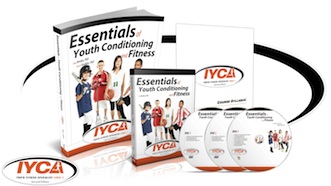Youth Athletes and Sports Injuries

By Clyde Mealy
The demands on today’s youth athletes are higher than ever. More youths are practicing longer and more frequently with fewer days in between to recover.
What is the cost of competition? According to Current Sports Medicine in 2008, reports that an estimated 45 million children and adolescents participated in organized sports in the United States alone. The question is how many are being properly trained and supervised. Nowadays, there is no true off-season to rejuvenate and have some fun or to play other sports just because… School athletics are followed by open or recreation league play that continues sometimes into the next season.
The bigger picture here is setting these youth athletes up for severe overuse injuries.
The most common for overuse is the shoulder joint for baseball players. The shoulder is the most moveable and most easily injured joint on the human body. Moreover, the elbow is another joint involved in overuse or repetitive movements. Medial Apophysitis (Little Leaguer’s Elbow), Tennis Elbow, Golfer’s Elbow are becoming more common in youth athletes. These conditions are especially serious in youth athletes because they are smaller, weaker and still growing. A family physician or sports specialist with a nonsurgical treatment as the goal if diagnosed early should examine any lingering symptoms.
Research conducted in 2000 revealed females had a 25% greater chance of an ankle injury over males. According to NASM, the sports commonly associated with ankle sprains are basketball, soccer and volleyball. It has been estimated that 80,000 – 150,000 ACL injuries occur each year. The Prime age group is 15-24 but more injuries are reported in youth athletes ages 10-14. Girls have five times the risk for an ACL injury than boys. Dr. Labella contributes this risk to poor neuromuscular control of knee motion during athletic tasks like landing from a jump, cutting or stopping. The importance here is the position of the knee (valgus) which places additional stress on the foot/ankle complex, the meniscus and the hip/low-back. If left unchecked, this can lead to an ankle sprain that can contribute to reduced participation of the gluteal muscles. Meniscus grinding can occur in the knee along with ligament damage due to weakness. If surgical repair is needed, this can lead to a life-changing event of how sports is viewed and played in the future. Osteoarthritis is a possibility along with other surgeries in the future.
According to Dr. Faigenbaum, to reduce the risk of sports-specific injuries in youth athletes like ankle and knee dysfunctions we should start with education and instruction. This should include a mastery of basic movements, exercise variation, proper progressive exercises and structured recovery. Veigel suggests rule changes in sports like baseball (pitch-counts) and hockey (checking) along with improved safety equipment and conditioning programs.
Overall, many youth athletes sports-related injuries can be avoided by properly preparing them for activity. Playing a contact sport like football or hockey will incur some minor sprains and strains as long as the proper equipment is worn and the game is played accordingly. Teaching today’s youth the fundamentals of their chosen sport can go a long way in how youth play the game they enjoy. It is our responsibility as fitness professionals to reinforce good habits and sportsmanship on and off the playing field.
As a trainer and volunteer coach, I prepare all my youth athletes with the proper warm-up of dynamic stretching, light cardio, core and balance training, concentric and eccentric training using resistance/weights, plyometrics, and bodyweight exercises/drills, and a cool-down with static stretching or yoga.
Injury prevention is my top priority. Especially for my female Youth Athletes, I work on foot/ankle and knee mechanics to activate the proper muscle groups (gluteals) to reduce injuries. Improved sports performance is the by-product of a properly trained and supervised youth athlete. In addition, structured recovery includes nutrition, hydration and supplements when appropriate and recommended by a healthcare professional like a family physician and or Registered Dietician. As the other experts suggested, education and instruction is the key to reduce injuries in today’s active youth.
Resources:
Labella, C., & Carl, R. (2010). Preventing knee ligament injuries in young athletes. Pediatric Annals, 39(11), 714-720. doi:10.3928/00904481-20101013-10
Myer, G. D., Faigenbaum, A. D., Ford, K. R., Best, T. M., Bergeron, M. F., & Hewett, T. E. (2011). When to Initiate Integrative Neuromuscular Training to Reduce Sports-Related Injuries and Enhance Health in Youth?. Current Sports Medicine Reports, 10(3), 157-166.
Veigel, J. D., & Pleacher, M. D. (2008). Injury Prevention in Youth Sports. Current Sports Medicine Reports, 7(6), 348-352.
NASM Essentials of Performance Enhancement, 2007



